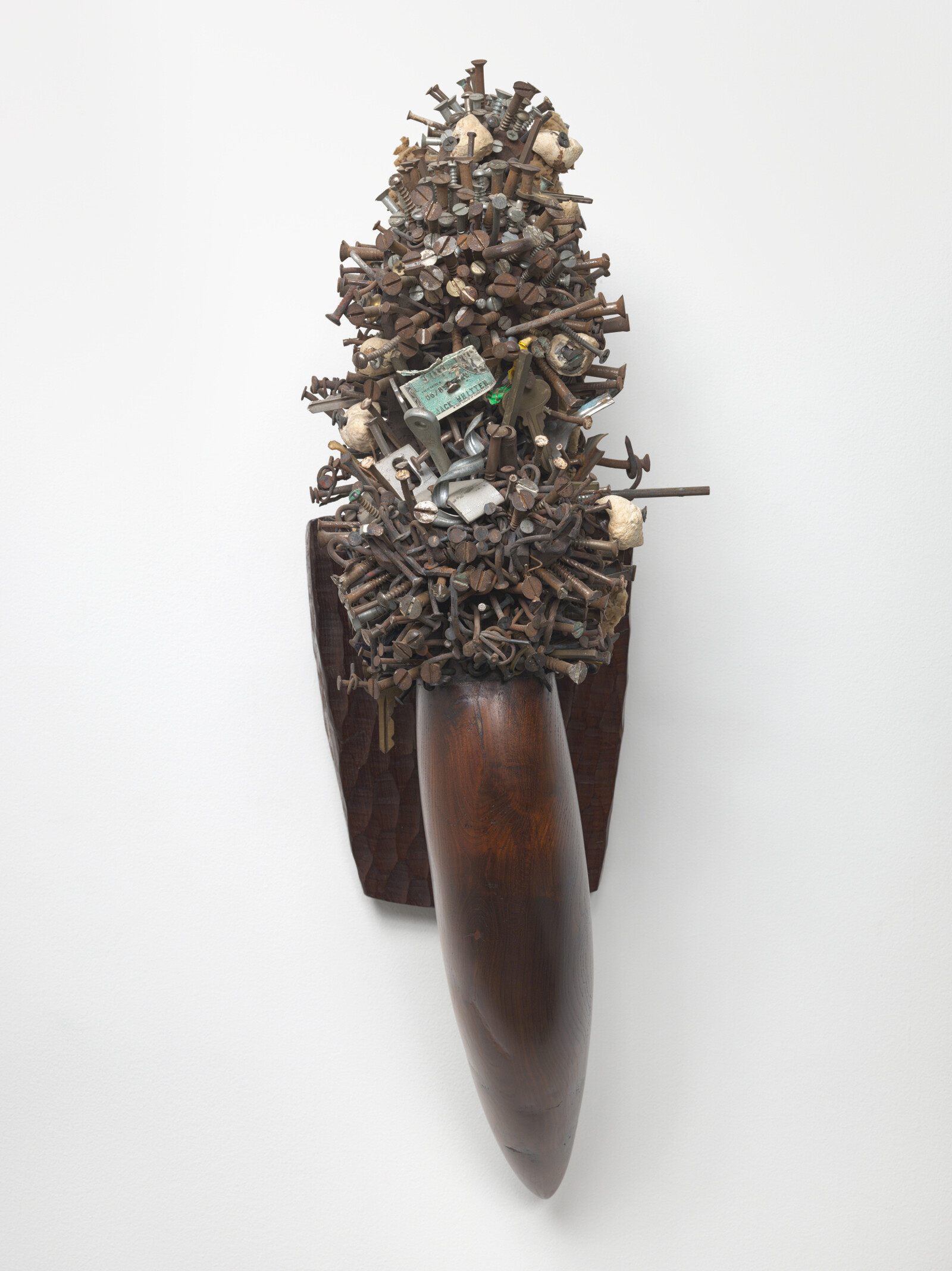April 22–July 29, 2018
10 Art Museum Drive
Baltimore, Maryland 21218
USA
Hours: Wednesday–Sunday 10am–5pm,
Thursday 10am–9pm
T +1 443 573 1700
F +1 443 573 1582
bmasocial@artbma.org
This spring, The Baltimore Museum of Art (BMA) presents Odyssey: Jack Whitten Sculpture, 1963-2017, the first exhibition dedicated to sculpture by renowned contemporary artist Jack Whitten. Co-organized with The Metropolitan Museum of Art (The Met), Odyssey reveals an extensive and entirely unknown body of the late artist’s work through 40 of Whitten’s sculptures made in Greece over the course of his five-decade career. Created from a diverse spectrum of materials—including wood, marble, copper, bone, fishing wire, and personal mementos—the works are contextualized with African, Minoan, and Cycladic sculptures and objects that inspired Whitten through the years. The exhibition also unites Whitten’s “Black Monolith” series for the first time to reveal how sculpture influenced his paintings. This ticketed exhibition is curated by Katy Siegel, BMA Senior Programming and Research Curator and Thaw Chair in Modern American Art at Stony Brook University, and Kelly Baum, Cynthia Hazen Polsky and Leon Polsky Curator of Contemporary Art at The Met.
Whitten (1939-2018) was one of the most important artists of his generation. His paintings range from figurative work addressing Civil Rights in the 1960s to ground-breaking experimentation with abstraction in the 70s, 80s, and 90s, to recent work memorializing Black historical figures such as James Baldwin and W.E.B. Du Bois. Whitten began carving wood in the 1960s in order to understand African sculpture, both aesthetically and in terms of his own identity as an African American. His art grew in unexpected ways when in 1969 he began spending summers on the island of Crete. There, Whitten was inspired by ancient Cycladic and Minoan objects, recognizing their functional role in society as repositories of power, memory, sensuality, and spirituality, much like the African works he had seen in New York institutions. The resourcefulness of the people of Crete and their connection to nature and to material life recalled his own upbringing in Alabama. In Crete, his materials expanded to incorporate local wood and marble, as well as bones left over from his fishing excursions. These organic materials—shaped by techniques such as carving, burning, and aggregation—imbued his own sculpture with a profound connection to ritual, nature, and the most fundamental experiences of human life. Whitten saw his work as just the latest episode in a long history of exchange between Africa, the African diaspora, and the Mediterranean. As the artist wrote in his studio log in 1975, “I am aware of the fact that this is the tradition in Art which I must connect with—a work of art with a function motivated by the tradition of African sculpture—MY WAY—not Picasso’s European interpretation.”
Odyssey: Jack Whitten Sculpture, 1963-2017 presents examples of works that inspired Whitten with carved figures from Cote d’Ivoire, Democratic Republic of Congo, Gabon, Guinea, Mali, Nigeria, and Sierra Leone drawn from the BMA’s outstanding collection of African art; as well as objects from Cyprus, Crete, and the Peloponnese from the collection of the Walters Art Museum in Baltimore. A gallery dedicated to Whitten’s “Black Monolith” series of paintings honoring African American cultural figures—including Muhammad Ali, Maya Angelou, and Ornette Coleman—reveals the connection between Whitten’s paintings and his previously unknown sculptures, and marks the first time these works have been exhibited together.
The exhibition is generously sponsored by The Alvin and Fanny B. Thalheimer Foundation, Suzanne F. Cohen, Anonymous, Heidi and Brian Berghuis, Amy L. Gould and Matthew S. Polk, Jr., Agnes Gund, Guy and Nupur Parekh Flynn, LaVerna Hahn Charitable Trust, Nancy Dorman and Stan Mazaroff, Amy and Marc Meadows, Clair Zamoiski Segal, Dorothy Wagner Wallis Charitable Trust, Eddie C. and C. Sylvia Brown, Eileen Harris Norton Foundation, Ilene and Michael Salcman, and Hauser & Wirth.
Odyssey’s catalogue features the sculptures made by Whitten over the past 50 years, as well as the “Black Monolith” series of paintings and archival photographs. The catalogue includes essays by Katy Siegel and Kelly Baum, as well as contributions by Kwame Anthony Appiah, Professor of Philosophy and Law at New York University; Kellie Jones, Associate Professor of Art History and African American Studies at Columbia University; Courtney J. Martin, Deputy Director and Chief Curator of Dia Art Foundation; and Richard Shiff, University of Texas at Austin’s Cain Chair in Art History.
Odyssey: Jack Whitten Sculpture, 1963-2017 is co-organized by The Baltimore Museum of Art and The Metropolitan Museum of Art. The exhibition will be on view at The Met Breuer September 6–December 2, 2018.


